October 28, 2022
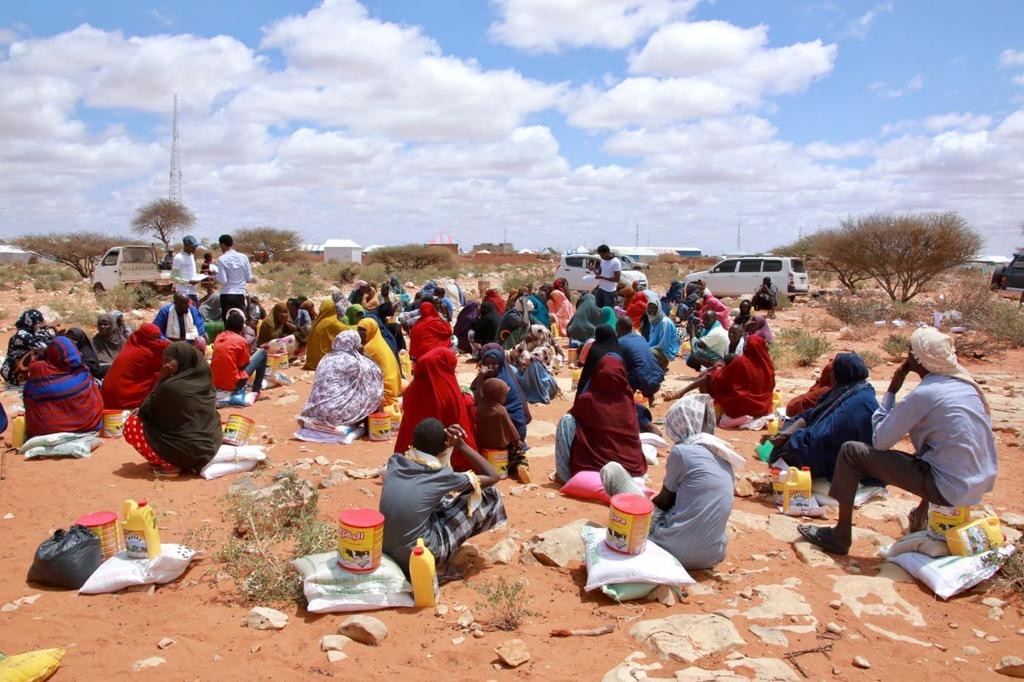
Progress of the Severe Drought Emergency Relief Project
In Somalia, the organization’s main activities are supporting the deradicalization and social reintegration of arrested and surrendered members of the non-state armed group Al-Shabaab, as well as efforts to encourage disengagement from Al-Shabaab. Since August 2022, the organization has been providing emergency assistance in central Somalia following a severe drought.
The emergency relief project consists of two main activities:
1. Support including the provision of emergency supplies (food, water, medicine, etc.) to save lives currently facing a crisis, emergency treatment, and awareness-raising on hygiene and nutrition
2. Strengthening support for young people to live without resorting to violence
We will explain the status of each support.
Support including provision of emergency supplies, emergency medical treatment, and hygiene and nutritional awareness
Over the past few years, we have been able to provide food, water, and medicine to a total of approximately 10,000 people, and have also implemented awareness programs on preventing infectious diseases such as tetanus and cholera, as well as on nearby medical facilities.
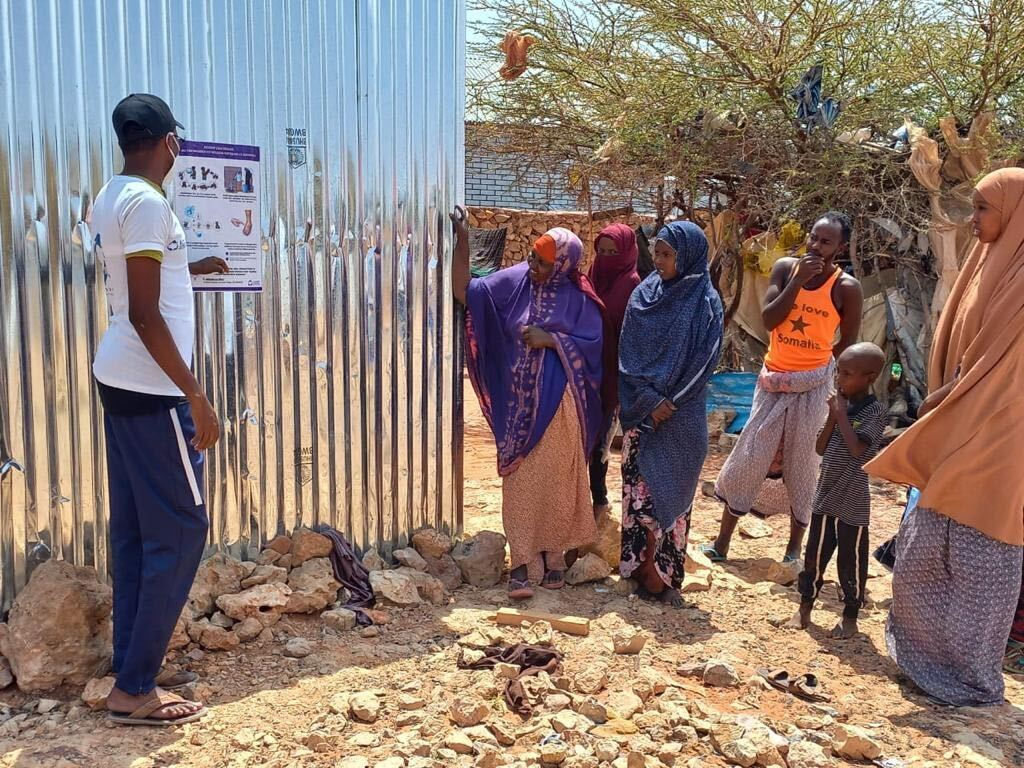 ▲Scenes from the educational and enlightenment program
▲Scenes from the educational and enlightenment program
The support is being provided to a total of 10 camps for internally displaced persons (IDPs) that have been newly established in central Somalia, approximately 40 km from areas controlled by Al-Shabaab. The camps are experiencing a rapid increase in the number of people fleeing not only the effects of drought but also the threat posed by Al-Shabaab.
Although central Somalia faces a very high risk of famine and terrorism, efforts there have been less than in the south. Furthermore, the camp in particular was selected as a target for support because it was newly established and has not yet received sufficient aid. Priority is being given to those in vulnerable positions, such as infants, children under five, and pregnant and breastfeeding women.
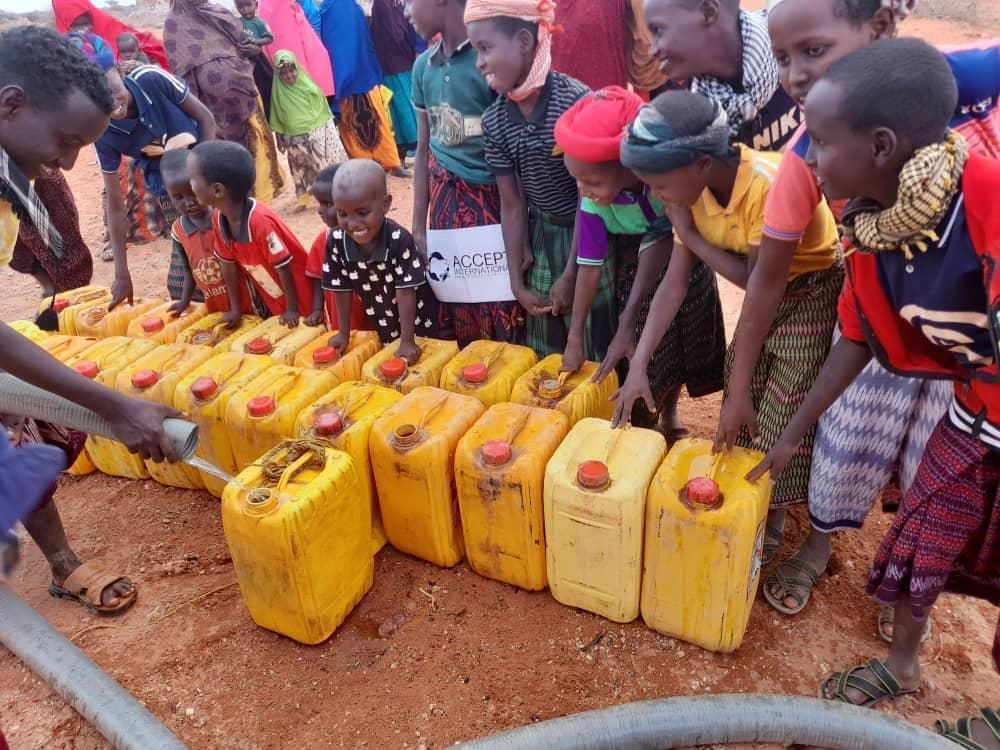
To date, we have provided a total of 5,300 people with a one-month supply of 10 kg of rice, 10 kg of beans, 2.5 kg of nutritious powdered milk, and 3 liters of cooking oil. These supplies are particularly in short supply in terms of nutrition. In addition, we have used water tankers to deliver safe drinking water and water for daily use to camps where people lack access to clean water and where illnesses such as diarrhea and infectious diseases are serious problems. Furthermore, as some children are unable to walk due to malnutrition, in addition to providing medicines, we are also providing emergency treatment in cooperation with medical institutions.
In addition to providing such assistance, the United Nations and various aid organizations are urging the international community to step up support. However, on September 5, 2022, it was officially announced that, if the situation does not improve, a famine will occur.
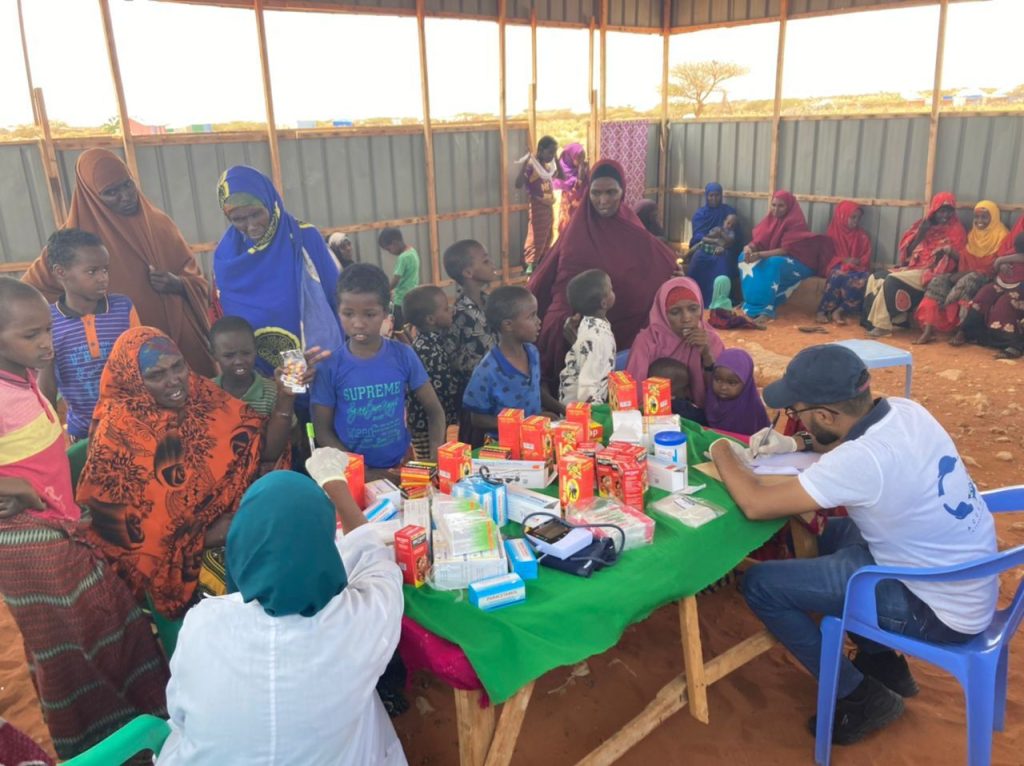
The last famine occurred in 2011, claiming more than 260,000 lives. The country is now on the brink of another famine, and many lives have already been lost.
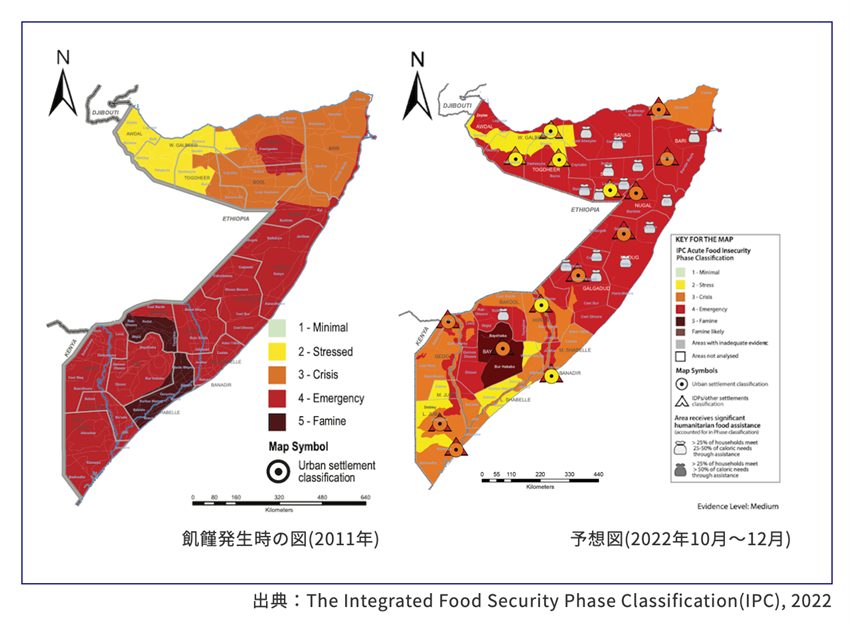
Looking globally, the most recent famines occurred in South Sudan in 2017 and in Somalia in 2011–12, and Somalia is now on the brink of experiencing its second famine in a decade.
Strengthening support for young people to live without resorting to violence -Why combine emergency response and conflict resolution?-
The reason why Somalia has repeatedly faced famine is due to the problems of terrorism and conflict within the country. In fact, neighboring countries Ethiopia and Kenya have also experienced similar droughts, but they have not reached the stage of famine. The difference is whether or not there is a large-scale conflict occurring in those countries.
Therefore, while emergency humanitarian assistance is important in Somalia, relying solely on it will mean the same thing will happen again if another drought occurs. That is why we believe it is necessary to take a comprehensive approach to the problem by simultaneously working to resolve the conflict.
Progress in efforts to combat resolve armed conflicts
First, in central Somalia, where the emergency support project is being carried out, we are not only supporting young people who are members of the non-state armed group Al-Shabaab to leave the organization, but also operating a rehabilitation center as a base for them to reintegrate into society.
To help young people leave the group, we work with local military forces to distribute leaflets calling for disengagement and have set up a toll-free telephone helpline. Through these strengthened support efforts, we have been able to convince a total of 328 young people to lay down their weapons.
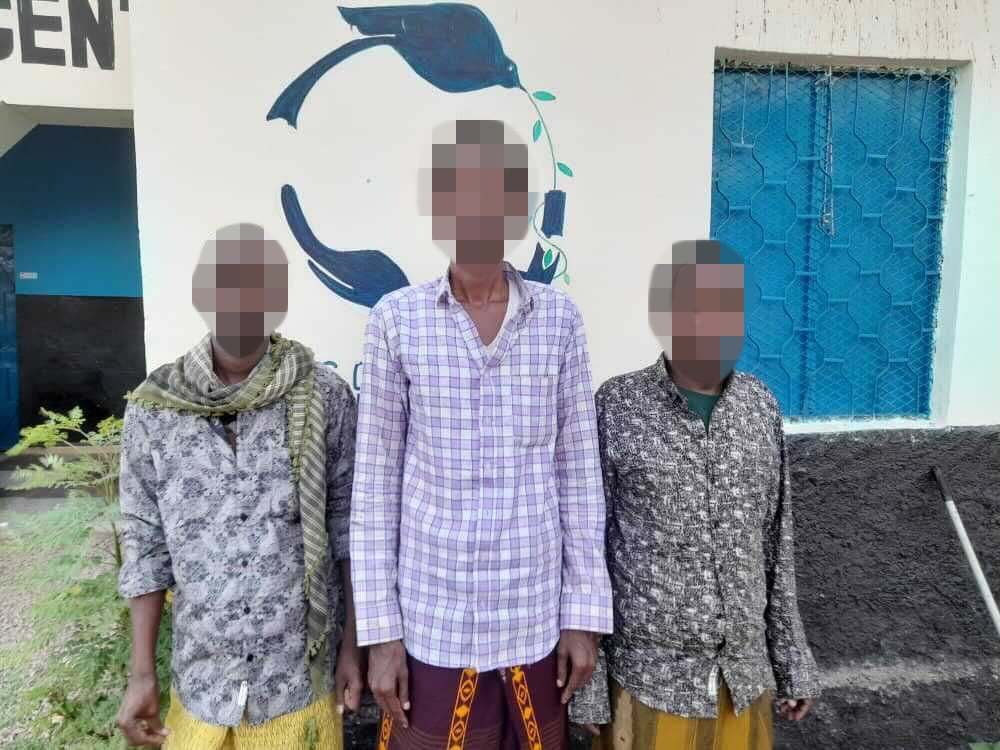 ▲Three former Al-Shabaab combatants have recently disengaged
▲Three former Al-Shabaab combatants have recently disengaged
Our leaflets are indeed reaching the front lines, and we are constantly receiving inquiries from young people who have seen them. Yet the journey from an initial call coming from armed-group-controlled territory to securing a safe place is extremely difficult. Disengagement literally puts lives at risk, as there is always the threat of retaliation if the group discovers their departure.
By creating an environment where young people trapped in these groups feel able to lay down their weapons, we can make a meaningful contribution to resolving the conflict. Our staff therefore work together to support them in various ways throughout the process of disengagement.
Furthermore, at the Disengaged Combatants Rehabilitation Center we operate independently in central Somalia, in collaboration with the state government, we have expanded beyond the basic education and counseling services previously provided. We now also deliver full-scale Islamic re-education seminars and vocational training.
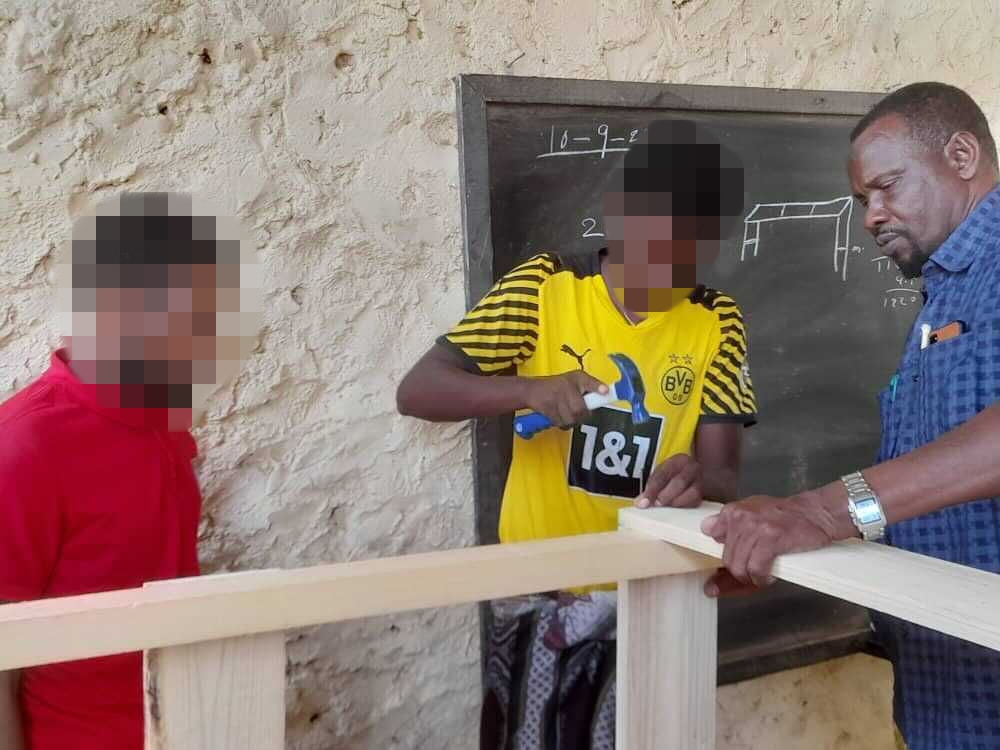 ▲ Carpenter training
▲ Carpenter training
This rehabilitation facility not only accepts disengaged combatants, but also serves as a junction with the local community, holding sessions that bring together influential local elders and youth representatives, with the aim of preventing the radicalization of young people and fostering reconciliation between former members of non-state armed groups and the local community.
With the lack of decent rain for around three years creating various crises, we are now more than ever reaching out to those left behind to prevent people from taking up arms and to help those who are also suffering within so-called violent extremist organisations find a way to start over.
As the impact of the drought is expected to continue for a long time to come, we intend to tackle the problem in a comprehensive manner, combining emergency response efforts with conflict resolution and education initiatives.
Activity Reports










